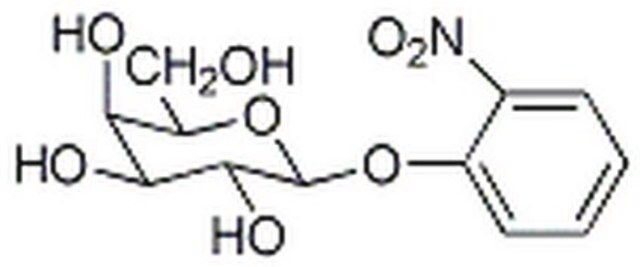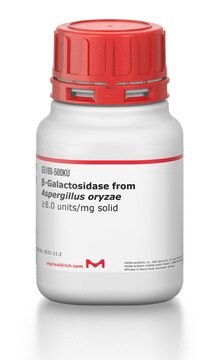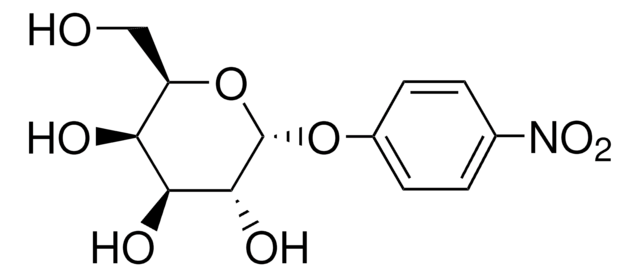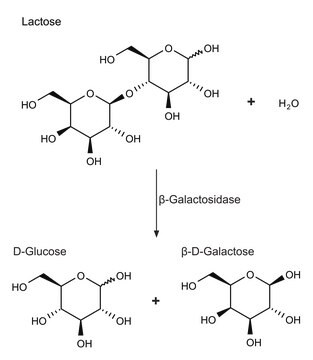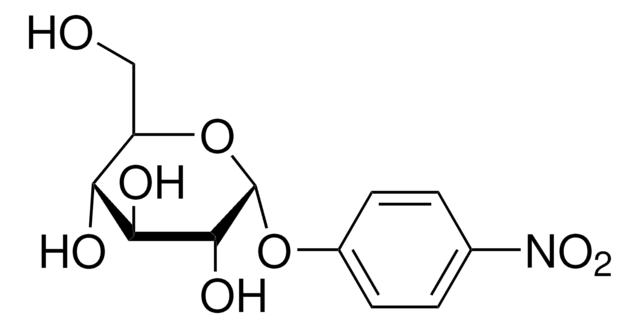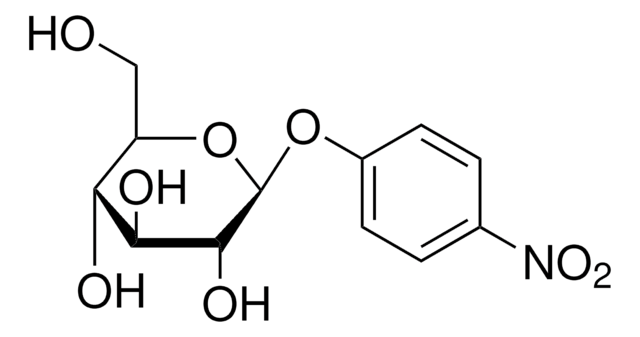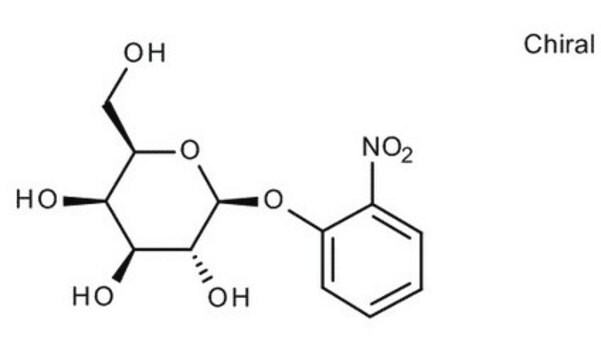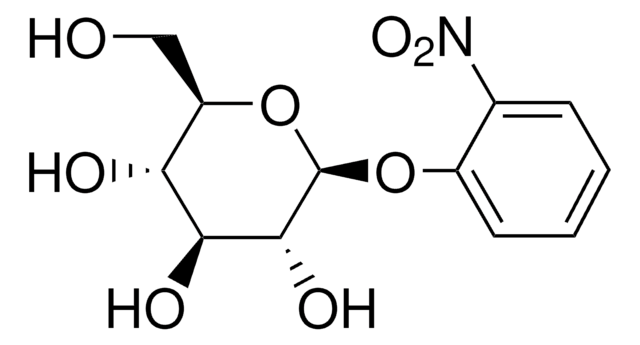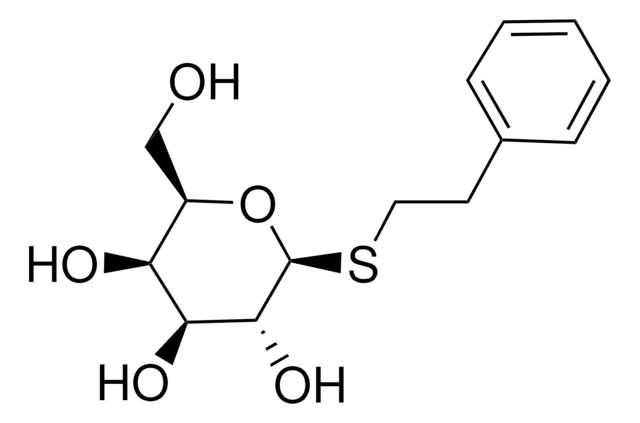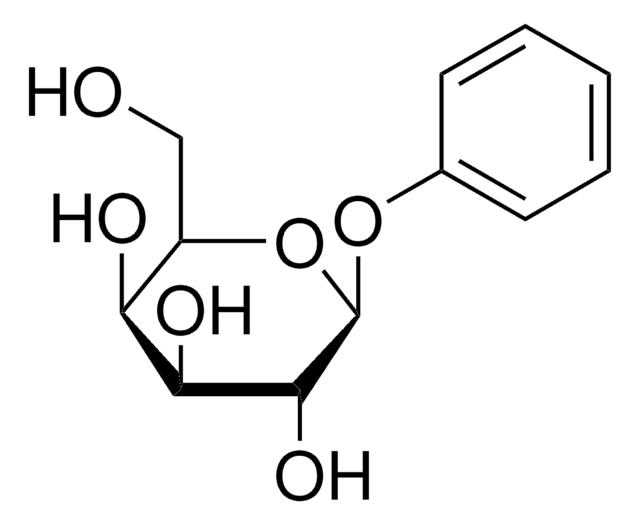Key Documents
N1127
2-Nitrophenyl β-D-galactopyranoside
≥98% (enzymatic)
Synonim(y):
ONPG , o-Nitrophenyl β-D-galactopyranoside, ONPG
About This Item
Polecane produkty
klasa czystości
for molecular biology
Poziom jakości
Próba
≥98% (enzymatic)
Postać
powder
temp. przechowywania
−20°C
ciąg SMILES
OC[C@H]1O[C@@H](Oc2ccccc2[N+]([O-])=O)[C@H](O)[C@@H](O)[C@H]1O
InChI
1S/C12H15NO8/c14-5-8-9(15)10(16)11(17)12(21-8)20-7-4-2-1-3-6(7)13(18)19/h1-4,8-12,14-17H,5H2/t8-,9+,10+,11-,12-/m1/s1
Klucz InChI
KUWPCJHYPSUOFW-YBXAARCKSA-N
Szukasz podobnych produktów? Odwiedź Przewodnik dotyczący porównywania produktów
Opis ogólny
Zastosowanie
Działania biochem./fizjol.
Zasada
Rekonstytucja
Substraty
Kod klasy składowania
11 - Combustible Solids
Klasa zagrożenia wodnego (WGK)
WGK 3
Temperatura zapłonu (°F)
Not applicable
Temperatura zapłonu (°C)
Not applicable
Środki ochrony indywidualnej
Eyeshields, Gloves, type N95 (US)
Certyfikaty analizy (CoA)
Poszukaj Certyfikaty analizy (CoA), wpisując numer partii/serii produktów. Numery serii i partii można znaleźć na etykiecie produktu po słowach „seria” lub „partia”.
Masz już ten produkt?
Dokumenty związane z niedawno zakupionymi produktami zostały zamieszczone w Bibliotece dokumentów.
Klienci oglądali również te produkty
Produkty
Transformation is the process by which exogenous DNA is introduced into a cell, resulting in a heritable change or genetic modification. This was first reported in Streptococcus pneumoniae by Griffith in 1928. Transforming principle of DNA was demonstrated by Avery et al. in 1944.
Protokoły
Yeasts are considered model systems for eukaryotic studies as they exhibit fast growth and have dispersed cells.
Nasz zespół naukowców ma doświadczenie we wszystkich obszarach badań, w tym w naukach przyrodniczych, materiałoznawstwie, syntezie chemicznej, chromatografii, analityce i wielu innych dziedzinach.
Skontaktuj się z zespołem ds. pomocy technicznej